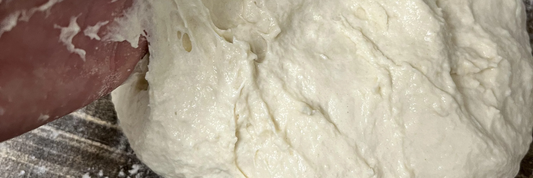If you have leftover Swiss cheese or bought in bulk, freezing is a great way to extend its shelf life and reduce waste. While Swiss cheese can be frozen, doing it properly is essential to preserve its flavor and texture. This guide will show you easy steps on how to freeze Swiss cheese correctly and how to thaw it for the best results.
- Can You Freeze Cheese? Yes, here’s Exactly How to Do It Right
- How Long Does Swiss Cheese Last?
- How to Pack Cheese the Right Way
- How to Make Homemade Swiss Cheese: Step-by-Step Guide & Packaging Tips
Benefits of Freezing Swiss Cheese

Freezing Swiss cheese is a practical and efficient way to manage your cheese inventory, whether you’re a busy home cook, a zero-waste enthusiast, or a small food business owner. Here’s why freezing Swiss cheese is a smart choice:
- Reduces Food Waste
Swiss cheese, like many natural cheeses, has a limited shelf life even when properly refrigerated. Freezing surplus cheese helps to prevent spoilage and waste, giving you more flexibility in how and when you use it. By freezing what you can’t consume immediately, you contribute to less food being thrown away and support more sustainable kitchen practices. - Saves Money by Allowing Bulk Purchases
Buying cheese in bulk is often more economical, but large amounts can spoil before usage if not stored correctly. Freezing allows you to take advantage of bulk pricing without the pressure to consume the cheese quickly. It makes stocking up during sales or when high-quality Swiss cheese is available easier and more cost-effective. - Enhances Meal Prepping and Foodservice Efficiency
For meal preppers and small-scale food businesses, freezing Swiss cheese provides reliable, ready-to-use inventory. This means you can prepare your recipes with confidence, knowing you have fresh-tasting cheese available without the risk of wasting product. It allows more predictable supply management and can simplify daily kitchen operations. - Keeps Cheese Conveniently Available for Cooking
Many cooked dishes benefit from Swiss cheese’s unique melting properties, such as fondues, gratins, casseroles, grilled sandwiches, and sauces. Frozen Swiss cheese retains most of its flavor and melting qualities, making it convenient to have on hand whenever you want to prepare these recipes without rushing to use fresh cheese before it spoils. - Extends Shelf Life Naturally Without Additives
Unlike processed cheese with preservatives, freezing is a natural preservation method that does not add chemicals or artificial packaging. When done correctly, freezing preserves the cheese’s flavor, texture, and nutritional integrity for up to six months. It allows you to keep artisan or imported Swiss cheese longer without compromising quality. - Supports Zero-Waste and Sustainable Kitchens
Freezing fits perfectly within a zero-waste lifestyle by maximizing the usability of all purchased food. It compliments eco-friendly storage practices when combined with sustainable, food-safe packaging like kraft paper boxes, compostable bowls, or reusable sealed containers. This holistic approach reduces environmental impact, waste, and packaging pollution. - Maintains Nutritional Benefits Over Time
Swiss cheese is valued for its calcium, protein, vitamin B12, and other nutrients. Freezing locks in these nutritional benefits by slowing down spoilage reactions. This ensures you continue to receive wholesome nutrition even from cheese stored for extended periods.
By incorporating freezing into your cheese storage routine, you can enjoy the best of Swiss cheese more flexibly, economically, and responsibly. Combining freezing with smart packaging and proper thawing techniques ensures a satisfying cheese experience every time.
How to Freeze Swiss Cheese Properly
Freezing Swiss cheese is an excellent way to extend its shelf life and minimize waste, but improper freezing can affect texture and flavor. To preserve the best quality, follow these detailed steps and tips:

Choose the Right Form for Freezing
- Block Cheese: Freezing whole blocks is possible if you prefer buying in bulk, but it can take longer to thaw. It’s best if you don’t plan to use the entire block at once.
- Sliced Cheese: Pre-slicing Swiss cheese before freezing makes it easier to thaw only what you need. Slices thaw faster and can be used directly in sandwiches or recipes.
- Grated or Shredded: Grated Swiss cheese freezes well and is convenient for cooking applications like casseroles, fondues, and gratins. Since grated cheese thaws quickly, a little texture change is less noticeable when melted.
Portion the Cheese into Usable Amounts
Cut your Swiss cheese into smaller portions before freezing, based on how much you typically use in recipes. This way, you avoid thawing the entire batch and wasting leftovers that can’t be refrozen. Smaller portions also freeze and thaw more evenly, helping maintain texture.
Wrap the Cheese Tightly & Correctly
Proper wrapping is critical to prevent freezer burn and preserve flavor:
- First Wrap:
Use wax paper or parchment paper to wrap the cheese tightly. This layer lets the cheese breathe just enough to avoid moisture build-up, which can cause spoilage or off flavors. Alternatively, eco-friendly compostable wraps made from plant fibers or cellulose can be a sustainable choice that works similarly. - Second Wrap:
Place the wrapped cheese inside a freezer-safe airtight container or freezer bag. Airtight packaging protects against freezer odors and dehydration. Vacuum sealing is the ideal option here, as it removes air and locks in quality for a longer period. - Avoid Direct Contact with Plastic Wrap:
Plastic wrap alone can trap moisture, leading to sogginess or ice crystals. If plastic wrap is your only option, use it over the wax or parchment layer, not directly on the cheese.
Label with Important Details
Always write clear labels on your packages:
- Cheese Type: Specify “Swiss cheese,” especially if you freeze multiple cheeses.
- Date: Record the freezing date to keep track of freshness. Swiss cheese is best used within 4 to 6 months of freezing.
- Portion Size: Optionally note the portion weight or quantity to make meal prep easier.
Freeze in the Optimal Freezer Zone
Place the wrapped cheese in the coldest area of your freezer, usually the back or bottom. Avoid the freezer door or spots with frequent temperature changes to reduce freezer burn risk.
Avoid Multiple Freeze-Thaw Cycles
Repeated freezing and thawing severely degrade texture and flavor. Freeze cheese only in portions you expect to consume within a few days after thawing to maintain quality.
Additional Tips for Best Results
- Use Clear Packaging:
Transparent or lightly tinted containers and bags make it easy to see the cheese and identify portions, helping avoid unnecessary opening and exposure. - Pre-Freeze Setup:
If freezing slices or grated cheese, consider spreading slices on a baking sheet and flash freezing them for 30–60 minutes before wrapping. This prevents slices from sticking together, allowing you to take out exactly what you need later. - Thawing Recommendations:
Always thaw frozen Swiss cheese slowly in the refrigerator to reduce moisture loss and texture changes. Avoid microwaving or thawing at room temperature, which can hasten spoilage or cause rubberiness. - Post-Thaw Use:
Slight crumbliness after thawing is normal; frozen Swiss cheese works best in cooked dishes like fondues, casseroles, or sandwiches, where texture changes are less perceptible.
Sustainable Packaging Options for Freezing
For eco-conscious kitchens, using sustainable packaging while freezing Swiss cheese is possible and beneficial:
- Compostable Wraps: Made from plant-based fibers, these wraps offer moisture protection and allow slight breathability to keep cheese fresh.
- Reusable Food-Safe Containers: Silicone or BPA-free plastic containers with tight lids can be reused for freezing and storage, minimizing single-use plastics.
- Kraft Paper Boxes: Ideal for blocks or larger pieces before freezing, especially when combined with inner wrapping.
- Vacuum Sealers: Though not usually eco-friendly alone, reusable vacuum seal bags with biodegradable materials are becoming available.
Related:
How to Freeze Swiss Cheese for Cooking, Snacking, and More
Freezing Swiss cheese varies depending on how you plan to use it later whether for sandwiches, cooking, or serving fresh. Tailoring your freezing method ensures you preserve its best qualities for each purpose.

For Sandwiches and Snacks
- Freeze slices individually: To keep slices from sticking together, separate them with parchment or wax paper before freezing.
- Thaw carefully: Thaw in the refrigerator to minimize texture changes. Slices retain enough pliability for cold sandwiches or melting, making them convenient for quick meals or packed lunches.
- Texture: Expect minimal changes; slices may be slightly drier but still versatile for cold or heated uses.
For Cooking and Melting
- Grate before freezing: Grated Swiss cheese is perfect for melting in recipes like fondues, gratins, casseroles, sauces, and baked dishes.
- Texture after thawing: Though freezing can make Swiss cheese slightly crumbly, this is less noticeable once melted, making grated frozen cheese ideal for cooking applications.
- Portion control: Freeze in meal-sized portions to avoid repeated freezing and thawing.
For Cheese Platters and Fresh Use
- Freeze in blocks: Blocks hold their shape better but can become crumbly or grainy once thawed, affecting fresh presentation.
- Recommendation: Use fresh Swiss cheese for cheese platters or cold snacking when possible. Frozen blocks can be reserved for cooking where texture changes are masked.
How to Thaw Frozen Swiss Cheese Safely
Thawing frozen Swiss cheese properly is key to preserving its best flavor and texture. Here’s a more comprehensive guide with additional tips to help you get the most out of your thawed Swiss cheese:
Thaw Slowly in the Refrigerator
The best method to thaw Swiss cheese is to transfer it from the freezer to the fridge and allow it to thaw gradually over 12 to 24 hours. This slow thawing process lets the cheese reabsorb moisture and minimizes the loss of texture and flavor. Placing the cheese on a plate or tray in the fridge helps catch any condensation and keeps surroundings clean.
Avoid Microwaving or Warm Water Thawing
Microwaving frozen Swiss cheese directly can quickly deteriorate texture, making it rubbery, tough, or unevenly melted. Warm water thawing also encourages moisture loss and uneven softening, so it’s not recommended. If you must speed up thawing, use the microwave defrost setting in very short intervals and monitor closely, but this should be a last resort.
Keep Cheese Wrapped During Thawing
If the cheese was wrapped tightly before freezing, keep it wrapped or covered while thawing in the fridge to prevent it from drying out or absorbing unwanted odors from other foods. This helps the cheese retain moisture and flavor better.
Use Thawed Cheese Within 2–3 Days
Once thawed, Swiss cheese should be used promptly—ideally within two to three days. Over time, thawed cheese can dry out, become crumbly, or lose flavor. Store thawed cheese wrapped in parchment or wax paper inside a loosely closed container or cheese paper to extend freshness during this short period.
What to Expect After Thawing
Be aware that freezing and thawing often cause natural Swiss cheese to become a bit crumbly or grainy. However, the flavor typically remains intact, and the slight texture change is usually masked well in cooked dishes. The cheese may not slice as cleanly as fresh cheese but remains delicious.
Best Culinary Uses for Thawed Swiss Cheese
Thawed Swiss cheese works wonderfully in recipes where it melts or blends smoothly, making any minor texture changes unnoticeable:
- Sauces and fondue: Swiss cheese’s rich meltability makes it perfect here.
- Grilled sandwiches and melts: The creamy melted texture complements breads and fillings well.
- Casseroles and pasta bakes: The cheese integrates seamlessly with other ingredients.
- Scrambled eggs and quiches: Adds flavor and creaminess without requiring perfect fresh texture.
Trying to use thawed Swiss cheese for fresh cheese boards or cold snacking isn’t ideal due to texture changes, so it’s best reserved for cooked applications after freezing.
Tips for Handling Thawed Cheese
- Slice or grate thawed Swiss cheese while still slightly chilled for easier handling.
- If crumbly, crumble or shred cheese for recipes where it can blend with other ingredients.
- Avoid excessive handling to minimize further texture degradation.
Storing Leftover Thawed Cheese
If you have leftover thawed Swiss cheese, rewrap it in parchment or wax paper and store it in a loosely closed container in the fridge. Use within a couple of days and avoid refreezing as this further compromises texture and flavor.
By following these comprehensive thawing tips, you can enjoy frozen Swiss cheese with minimal compromise on taste and texture. Careful thawing, proper storage, and mindful usage ensure your Swiss cheese remains a delicious and versatile ingredient even after freezing.
How to Store Cheese Properly (Must-Know Tips for Longer Freshness)
Conclusion
Freezing Swiss cheese helps extend shelf life, reduce waste, and save money. By freezing and thawing it properly using tight wrapping, portioning, and slow fridge thawing, you can keep much of its flavor and texture. Though slight texture changes may occur, frozen Swiss cheese is perfect for cooking and melting dishes. Using sustainable packaging supports both quality and the environment.







